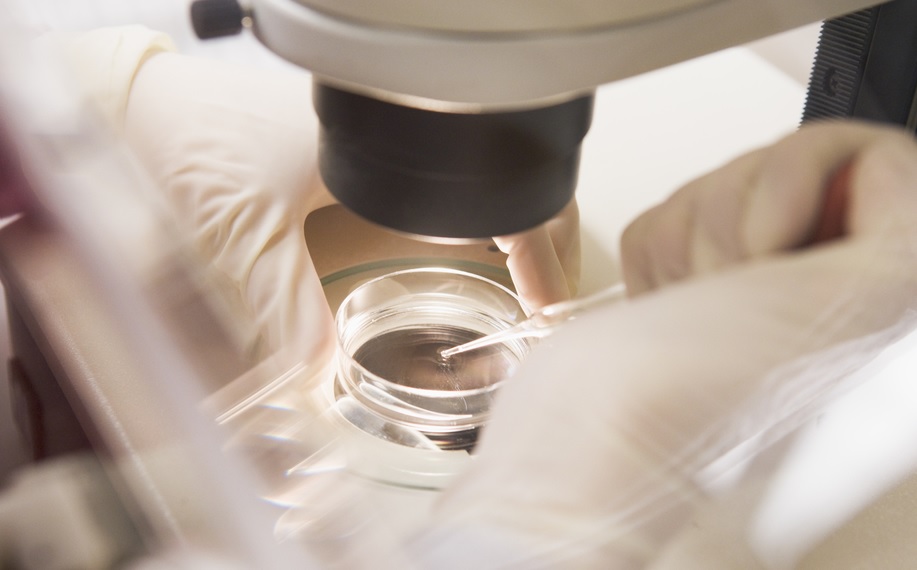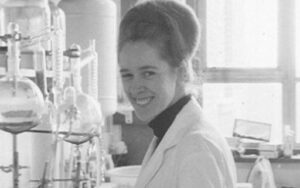A Comprehensive Guide to Modern IVF Technology
Article contributed by:
Matthew A. Lederman MD
RMA of New York, a participating WINFertility Provider NetworkAs we are committed to assisting the millions of couples and individuals struggling with infertility, RMA of New York is proud to support National Infertility Awareness Week (NIAW), taking place April 24-30th, 2016. In 1989, National Infertility Awareness Week was founded by RESOLVE: The National Infertility Association, our partner in promoting awareness of reproductive health and improving access to infertility services for all.Understanding infertility is the first step in receiving appropriate treatment. In young, healthy women, the average monthly pregnancy rate is approximately 20%. As women age, this rate starts to decline, especially after 35 because both the number of eggs, as well as the quality of eggs decline with age. Additionally, the miscarriage rate also increases with age which can usually be attributed to the quality of the eggs.When it comes to infertility treatment, IVF is by far the most effective treatment option with the highest pregnancy rates, and recent studies have suggested that it is a smart first-line treatment in any woman over the age of 35 since it is the most efficient treatment, usually resulting in the shortest time to pregnancy. In general, common indications for IVF include failed conservative treatment, damaged fallopian tubes, endometriosis, moderate or severe sperm abnormalities and diminished ovarian reserve.In the earliest days of IVF, embryos were routinely cultured for 2-3 days prior to undergoing transfer. In comparison, an embryo that is created naturally typically does not enter the uterus until day 5 or 6 following fertilization. Over the course of time, advancements and improvements in IVF culture conditions have enabled embryos to be cultured successfully to the blastocyst stage (a day 5 or 6 embryo) and therefore transferred into the uterus at a more “natural” time. An advantage of extending culture to the blastocyst stage is that embryologists can more accurately identify best quality embryos, thereby reducing the number of embryos needed to be transferred. A blastocyst stage transfer affords the opportunity of choosing the more viable embryo, thus optimizing pregnancy rates while reducing the multiple pregnancy rates since fewer embryos are transferred.In the past, it was common for couples undergoing IVF to have multiple embryos transferred. While this increased the likelihood of conceiving, it was associated w/ significant risk of multiple gestations. This is important because a multiple pregnancy, such as a twin pregnancy, is inherently more dangerous to both the mother and the health of the developing fetus. Risks associated with these pregnancies include preterm delivery and low birth weight, which can increase the newborn’s chance of developing respiratory distress, gastrointestinal infections and intracranial bleeding, all of which may result in longer hospital stays in the neonatal intensive care unit (NICU). These complications unfortunately can also result in permanent and severe disability. Maternal risks associated with a multiple pregnancy including gestational diabetes, high blood pressure, and preeclampsia, increased bleeding at time of delivery and increased risk of requiring a cesarean section for delivery. Thus, transferring fewer embryos enhances the overall safety of IVF for both the mother and the baby since these complications of a multiple pregnancy can be avoided.Multiple gestations are almost entirely preventable with the transfer of a single embryo. Our goal at RMA of New York is for our patients to achieve a healthy pregnancy resulting in a delivery of a healthy full-term singleton baby while minimizing the associated risks of a twin pregnancy. As a program, we have been able to achieve this goal with greater frequency since single embryo transfers (SET) have been increasingly successful. Improvements in technology and embryo culture have resulted in the increased utilization of single embryo transfers with a high level of success. Embryos are carefully analyzed, graded, and, in a single embryo transfer, the highest graded blastocyst is selected for transfer into the mother.Embryo screening techniques and technology have also advanced in recent years, thus enhancing the utilization and effectiveness from a single embryo transfer, helping to further increase the likelihood of healthy, singleton pregnancies. Preimplantation genetic diagnosis (PGD), more appropriately referred to as preimplantation genetic screening (PGS), or comprehensive chromosomal screening (CCS), is an advanced screening technique involving biopsy of the embryo, which identifies chromosomally normal, or euploid, embryos prior to embryo transfer. Accurate diagnosis and the enhanced safety with biopsy at the blastocyst stage have resulted in increased implantation and delivery rates and have led to the further development and use of CCS. This embryo screening technique has increased the frequency of single embryo transfers, decreased the incidence of multiple gestations, decreased the incidence of miscarriage and has helped reduce the time to pregnancy since time lost to both failed cycles and miscarriages are minimized.When using CCS during an IVF cycle, the embryos undergo biopsy at the blastocyst stage to identify euploid embryos. These embryos are generally cryopreserved and frozen using a specialized technique referred to as vitrification until the genetic tests are available. This process allows for the identification of the healthiest single euploid embryo, which is generally thawed (unfrozen) and transferred a few weeks later in a frozen embryo transfer cycle (FET). Advances in embryo cryopreservation techniques utilizing vitrification with precise rewarming of embryos has allowed well over 90% of embryos to successfully survive the thaw process.Recent studies have demonstrated that embryos transferred in a frozen cycle may have a higher chance of implantation with fewer obstetrical risks than those embryos transferred in a fresh IVF cycle. Furthermore, excess euploid embryos can be saved for future attempts at pregnancy, since these embryos can remain frozen indefinitely.A key benefit of using CCS is screening for aneuploidy, or chromosomally abnormal embryos, which areidentified and then not transferred back during an IVF cycle. This is important because aneuploidy is a significant contributing factor in implantation failure and spontaneous miscarriages, and is likely responsible for the majority of IVF failures. Aneuploidy rates increase with increasing maternal age which is why older women have lower pregnancy rates and higher miscarriage rates in an IVF cycle. Recent studies demonstrate that the transfer of a single screened euploid embryo has an equivalent pregnancy rate as the transfer of two unscreened embryos. As a result, due to the improved implantation and pregnancy rates, couples utilizing CCS generally undergo a single embryo transfer, which therefore almost eliminates the risk of a twin pregnancy yet doesn’t decrease the likelihood the transfer will result in a viable pregnancy.Those who may benefit from CCS include women over the age of 35, those who have a history of failed IVF, those undergoing embryo banking cycles to maximize their future success of building their ideal-sized family, or couples with a history of recurrent miscarriages. Additionally, couples who are carriers for a genetic disorder (ie. Cystic Fibrosis, Tay Sachs Disease, etc), or have a genetic predisposition to cancer, and therefore at risk for having a child with the specific disorder or predisposition to cancer, in conjunction with aneuploidy screening, may undergo preimplantation genetic diagnosis (PGD) to prevent having a child with the disorder or cancer predisposition.IVF has evolved dramatically over the last few decades, and advancements in IVF have shifted the focus not just to assist patients to achieve a pregnancy, but to achieve the goal of a single healthy baby. As a result, IVF with CCS and transfer of a single euploid embryo in an FET cycle has become the preferred method of IVF at RMA of New York. While we work with our patients to offer the most effective treatment on an individualized basis, this approach enhances the ability to prevent an aneuploid pregnancy helping patients avoid the devastating and emotional suffering from a miscarriage and is truly a more patient-oriented approach.We encourage patients to #StartAsking as per this year’s NIAW theme, and as a proud supporter of RESOLVE and those struggling with infertility, RMA of New York stands committed to delivering compassionate, expert quality care for couples and individuals so they are able to successfully achieve their family building dreams.
Subscribe to stay in the loop
Our newsletter delivers expert insights, practical benefit strategies, heart warming member
moments, and the latest in fertility and family-building news straight to your inbox.



